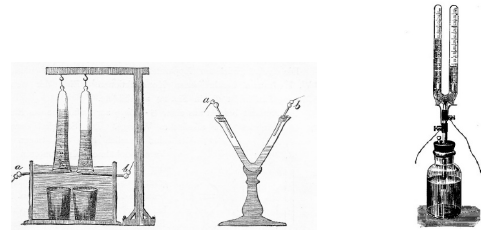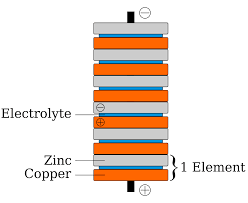A Brief History of Electrolyzers
Today’s post will focus on a brief history of electrolyzers. Jan Rudolph Deiman and Adriaan Paets van Troostwijk used, in 1789, an electrostatic machine to make electricity which was discharged on gold electrodes in a Leyden jar with water. In 1800 Alessandro Volta invented the voltaic pile.
A few weeks later, however, English scientists William Nicholson and Anthony Carlisle used it for the electrolysis of water.

The apparatus used by Ritter (left) and later constructions.
In 1806 Humphry Davy reported the results of extensive distilled water electrolysis experiments concluding that nitric acid was produced at the anode from dissolved atmospheric nitrogen gas.
H2 was chemically obtained by dissolving metal in acid and used for filling air balloons. With growing demand in industry, electrochemically generated hydrogen became more and more advantages – from economical point of view. When Zénobe Gramme invented the Gramme machine in 1869 electrolysis of water became a cheap method for the production of hydrogen followed by the industrial synthesis of hydrogen and oxygen through electrolysis developed by Dmitry Lachinov in 1888.
Large-scale hydrogen synthesis has changed the picture in the first third of 20th century. Nowadays, electro-energy prices do not play the decisive cost role, when one kWh of electricity can be obtained for a few cents from so-called green energy.
Read our previous blog posts on different types of electrolyzers and how electrolyzers work.

